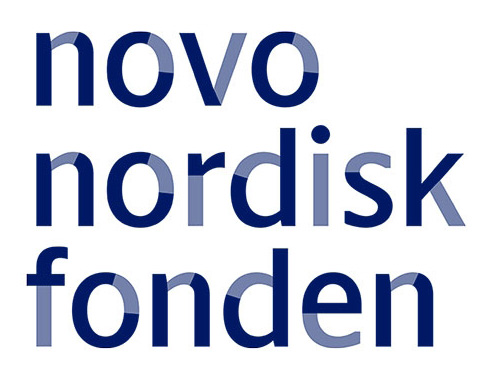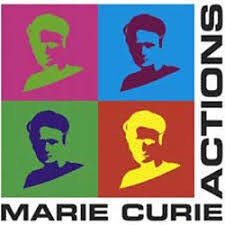Wennerberg Group
We are interested in discovering precision cancer therapies targeting the cancer cells that survive current therapies and eventually cause the cancer to grow back, such as cancer stem cells. To accomplish this, we explore functional studies of cancer cell cultures and how different subpopulations respond to different treatments.
For most cancers, therapeutic approaches have been identified that initially can eradicate most of the cancer cells, but very commonly, some cells with capacity to reform the cancer persist, and eventually cause the cancer to relapse. In some cancer types, such acute myeloid leukemia (AML), these relapse-driving cells have clear cancer stem cell features. In other cancers, these cells are more likely “fit” cancer cells that can take on cancer stem cell-like properties through intrinsic or extrinsic cues. Our goal is to understand mechanisms of drug sensitivity and resistance in individual cancers and in particular the subsets of cells that persist current therapies and drive cancer recurrence. Through this knowledge, we aim to identify new effective cancer precision medicine strategies that can be explored in clinical trials. Our overarching research questions are therefore:
- Can we identify and understand the drug resistant cells in a cancer, including the cells with cancer stem cell properties that have the capacity to regrow new tumors?
- Can we identify “druggable” vulnerabilities in these cells?
- Can we predict drug resistance mechanisms and therapeutic approaches to overcome them from molecular and phenotypic profiles of an individual cancer?
- Can these discoveries be translated to clinical efficacy?
Establishment of cancer cell ex vivo drug response profiling methods to identify personalized cancer therapies.
- Development of drug response profiling platforms for real-time discoveries of personalized therapies.
- Establishment of analytical methods for optimal analyses of high throughput drug response profiling.
- Primary culturing methods allowing for identification and repurposing drugs that can eradicate cancer stem cells and overcome treatment resistance.
Combining in vitro drug screens with drug target information and molecular profiles to identify molecular vulnerabilities and effective drug combinations.
- Collaborative establishment of the largest available curated drug-molecular target interaction resource (Drug target commons).
- Combining drug response profiling, drug target information and molecular profiling has allowed us computationally predict and validate new drug combination strategies for individual cancers and cancer cell subtypes.
Targeting RAF kinases in acute myeloid leukemia.
- RAF kinase inhibition is selectively inducing apoptosis in a subset of AMLs. This is different than inhibition of the downstream kinases MEK and ERK, which only cause temporary cytostasis.
- RAF inhibition leads to loss of translation of the anti-apoptotic protein MCL-1, thereby inducing apoptosis.
- RAF inhibition can overcome BCL-2 inhibitor resistance in AML and together with BCL-2 inhibitors target the phenotype of the leukemic stem cells.
Discoveries of selective drug combinations overcoming drug resistance development in mature NK cell cancers.
- Mature NK cell cancers are rare cancers but very aggressive cancers with a poor prognosis
- These cancers are driven by JAK/STAT signaling, but blocking this signal only slows down the cancer cells and is insufficient to eradicate them.
- Through series of short- to long-term drug response profiling assays, several clinically relevant JAK inhibitor containing combinations with capacity to completely eradicate mature NK cell cancer models were identified, including combinations targeting TP53-mutant disease.
- Discovery of personalized AML stem cell targeting therapies:
Using high throughput flow cytometry, we are aiming at understanding differentiation hierarchies in individual AML patient samples and how drugs can selectively target the phenotypes of the leukemic stem cells that drive the disease. - Overcoming drug resistance to BCL-2 inhibition in AML:
The BCL-2 inhibitor venetoclax is an effective drug to treat AML because it selectively targets the phenotype of the leukemic stem cells. However, over time, some leukemic stem cells can adapt to bypass the BCL-2 dependence and the leukemia relapses. We are studying samples from AML patients before and after they have developed resistance to BCL-2 inhibition to identify venetoclax resistance-associated vulnerabilities in the leukemic stem cells and new therapeutic strategies to overcome the resistance. - Reactivation of the immune system against AML cells:
Exploring mechanisms by which the endogenous immune system can be reactivated to target and eradicate the AML cells. - Overcoming drug resistance to chemotherapy in high-grade ovarian cancer:
Using primary cancer cell organoids, we use chemical and genetic screens to trace and understand the phenotypes of the drug-resistant tumor-initiating cells, their mechanisms of drug resistance as well as identifying therapeutic strategies to overcome it.
Many of our studies start from high throughput chemical or genetic screens to profile the dependencies of individual cancers and their subpopulations. In the drug response profiling of primary cancer cells, we use laboratory automation systems in the BRIC High Throughput Cell-based Screens/High Content CRISPR Screening core facility, including high content microscopy and arrayed CRISPR screening, and the automated systems for high throughput flow cytometry screening in the High Throughput Translational Hematology lab under the Program for Translational Hematology.
Selected publications
Parri E, Kuusanmäki H, Bulanova D, Mustjoki S, Wennerberg K. Selective drug combination vulnerabilities in STAT3- and TP53-mutant malignant NK cells. Blood Adv. 2021 Apr 13;5(7):1862-1875. doi: 10.1182/bloodadvances.2020003300. PMID: 33792631; PMCID: PMC8045497.
Ianevski A, Lahtela J, Javarappa KK, Sergeev P, Ghimire BR, Gautam P, Vähä- Koskela M, Turunen L, Linnavirta N, Kuusanmäki H, Kontro M, Porkka K, Heckman CA, Mattila P, Wennerberg K, Giri AK, Aittokallio T. Patient-tailored design for selective co-inhibition of leukemic cell subpopulations. Sci Adv. 2021 Feb 19;7(8):eabe4038. doi: 10.1126/sciadv.abe4038. PMID: 33608276; PMCID: PMC7895436.
Tambe M, Karjalainen E, Vähä-Koskela M, Bulanova D, Gjertsen BT, Kontro M, Porkka K, Heckman CA, Wennerberg K. Pan-RAF inhibition induces apoptosis in acute myeloid leukemia cells and synergizes with BCL2 inhibition. Leukemia. 2020 Dec;34(12):3186-3196. doi: 10.1038/s41375-020-0972-0. Epub 2020 Jul 10. PMID: 32651543.
Akimov Y, Bulanova D, Timonen S, Wennerberg K, Aittokallio T. Improved detection of differentially represented DNA barcodes for high-throughput clonal phenomics. Mol Syst Biol. 2020 Mar;16(3):e9195. doi: 10.15252/msb.20199195. PMID: 32187448; PMCID: PMC7080434.
Gautam P, Jaiswal A, Aittokallio T, Al-Ali H, Wennerberg K. Phenotypic Screening Combined with Machine Learning for Efficient Identification of Breast Cancer-Selective Therapeutic Targets. Cell Chem Biol. 2019 Jul 18;26(7):970-979.e4. doi: 10.1016/j.chembiol.2019.03.011. Epub 2019 May 2. PMID: 31056464; PMCID: PMC6642004.
Pemovska T, Johnson E, Kontro M, Repasky GA, Chen J, Wells P, Cronin CN, McTigue M, Kallioniemi O, Porkka K, Murray BW, Wennerberg K. Axitinib effectively inhibits BCR-ABL1(T315I) with a distinct binding conformation. Nature. 2015 Mar 5;519(7541):102-5. doi: 10.1038/nature14119. Epub 2015 Feb 9. PMID: 25686603.
In the media
New screening method to prevent relapse among people with leukaemia
9. APR 2021 by Sciencenews.dk
Follow Wennerberg group on Twitter
Program for Translational Hematology
Precision drugs Against Resistance In Subpopulations ERA PerMed project






